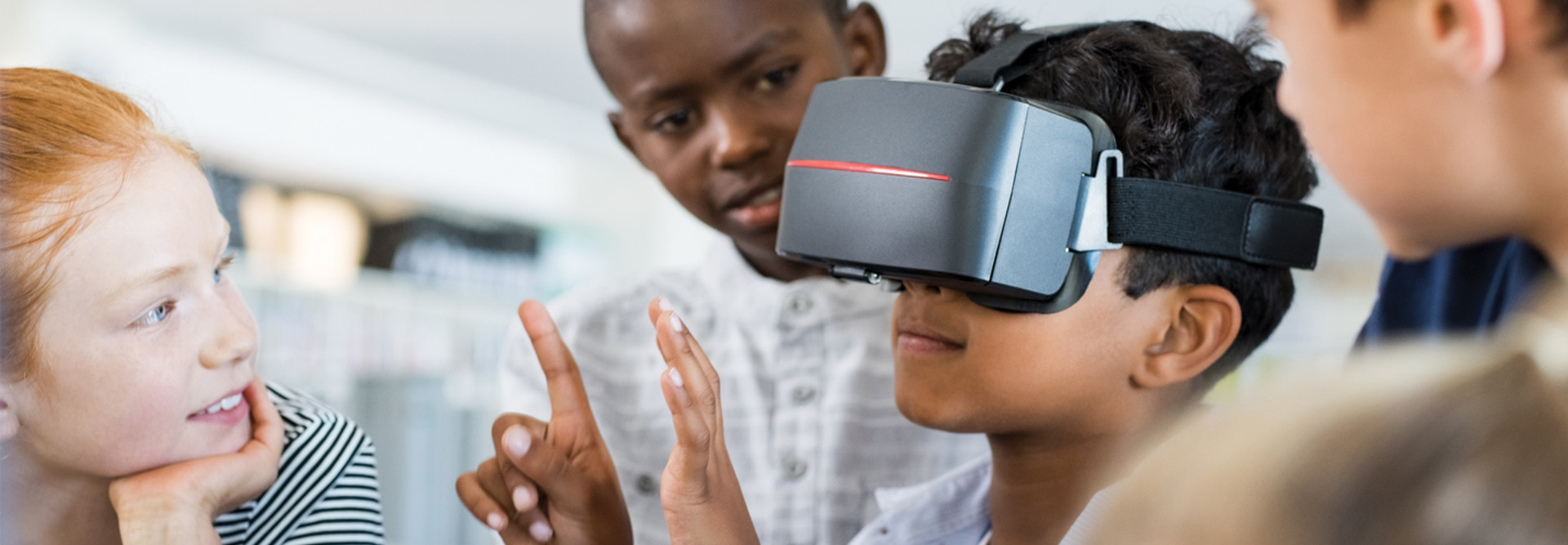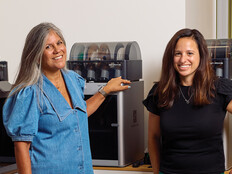Survey: Education Among Top Industries for AR/VR Investments
Students can read about dinosaurs, or they can go to the park around the corner and roam the land alongside the ancient beasts. They can dissect frogs or assist a world-famous surgeon in the operating room. They can write book reports or embed videos of characters in their presentations.
When teachers talk about bringing lessons to life, they’re no longer speaking figuratively. A growing number of educators are using extended reality applications to let students interact with people, places and things on the opposite side of the planet, as well as historical figures.
XR includes virtual reality, which is an entirely digital world; augmented reality, which overlays digital content on top of real-world environments; and mixed reality, a combination of the two. These tools are likely going to become significantly more popular in the near future.
The vast majority — 86 percent — of respondents to the 2019 Augmented and Virtual Reality Survey Report agreed that by 2025, XR technologies will be as ubiquitous as mobile devices.
Investors (who were among the survey’s 200 participants along with startup founders, technology executives and consultants) said they put more money into XR last year than they had predicted they would in two prior surveys, and they planned to continue their investments. In fact, venture capital funding in augmented and virtual reality hit $1.7 billion by the fourth quarter of 2018, a threefold increase from the same period the previous year.
The survey, conducted by the law firm Perkins Coie and the XR Association, offered even more ambitious projections for schools. When asked which industries these immersive technologies are most applicable to, 41 percent said education. Those responses were second only to gaming (61 percent) and tied with healthcare/medical devices.
Survey participants also predicted big investments in XR classroom technology in 2020. Gaming and healthcare were the top two fields, but 36 percent said the technology is most applicable to education.
That prediction is already beginning to bear fruit. At the U.S. Department of Education’s 2019 ED Games Expo, 20 percent of the 125 educational games included augmented or virtual reality.
Some of the most popular XR platforms, according to the study by Perkins Coie, are Google ARCore, Oculus Rift and HTC Vive, with 34 percent, 33 percent and 28 percent of respondents, respectively, saying they’re currently developing applications for them.
MORE FROM EDTECH: Read about ways AR and VR add value to teaching and learning.
How AR, VR and Mixed Reality Enhance Learning
There are several benefits to AR/VR/MR in the classroom, including increased content understanding, a better grasp of spatial structures, greater learning of language associations, long-term memory retention and increased student motivation.
Students have better recall — an 8.8 percent increase — when working in immersive environments as opposed to traditional computer screens, according to a study on virtual reality and memory by the University of Maryland.
Extended reality has also been found to increase collaboration. It’s already begun to take hold in social media (think Snapchat filters), and virtual 3D spaces for learning are likely to become the norm in the near future.
It’s an environment that’s familiar to Jaime Donally, a former teacher who now is an educational consultant and author of Learning Transported: Augmented, Virtual and Mixed Reality for All Classrooms. Donally introduces students and teachers to such activities as holding virtual beating hearts in their hands and traveling through the solar system.
But, she cautioned earlier this year, it’s important for educators to have a plan and purpose for introducing XR in the classroom. The most important part of selecting what immersive technology to deploy, she says, is “defining goals and expectations for how mixed reality integration will benefit classroom instruction.”
That way, students don’t just go on aimless hikes through the rain forests of the Democratic Republic of Congo. Instead, they can walk in the shoes of a wildlife biologist in search of gorillas.









